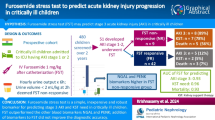Abstract
Objective
(i) To determine whether clinical features and biochemical parameters help to predict survival of methylmalonic acidemia with homocystinuria; (ii) To find the cutoff values of biochemical parameters for predicting survival of methylmalonic acidemia with homocystinuria.
Design
A prospective cohort study.
Setting
A pediatric tertiary hospital in Beijing; all patients were followed until death or June 2013.
Subjects
45 pediatric patients diagnosed with methylmalonic acidemia with homocystinuria between 2006 and 2012.
Outcome measures
The data of clinical characteristics and pretreatment biochemical parameters were collected. The Cox regression analysis was performed to identify independent risk factors for survival of patients with methylmalonic acidemia and homocystinuria. The best cutoff values for these independent factors were determined by the receiver characteristic curve.
Results
Newborn onset (OR=6.856, 95%CI=2.241–20.976, P=0.001), high level of methylmalonic acid in urine (OR=1.022, 95%CI=1.011–1.033, P<0.001), and high level of urea in serum (OR=1.083, 95%CI=1.027–1.141, P=0.003) were independent negative risk factors for survival of patients with methylmalonic acidemia and homocystinuria. The cutoff values of maximum predictive accuracy of methylmalonic acid in urine and urea in serum were respectively 5.41 mmol/mmol creatinine and 7.80 mmol/L by receiver operating characteristic curve analysis.
Conclusion
The patients of methylmalonic acidemia with homocystinuria tend to have an adverse outcome if they have newborn onsets. Elevated urea and urinary methylmalonic acid are predictors of adverse outcomes for the patients. They show similar effect for predicting severe adverse prognosis. The combination of methylmalonic acid in urine concentration and urea in serum concentration provided the most accurate predictive tool.
Similar content being viewed by others
References
Tu WJ. Methylmalonic acidemia in mainland China. Ann Nutr Metab. 2011;58:281.
Carrillo-Carrasco N, Chandler RJ, Venditti CP. Combined methylmalonic acidemia and homocystinuria, cblC type. I. Clinical presentations, diagnosis and management. J Inherit Metab Dis. 2012;35:91–102.
Ma X, Zhang Y, Yang Y, Liu X, Yang Z, Bao X, et al. Epilepsy in children with methylmalonic acidemia: electroclinical features and prognosis. Brain Dev. 2011;33:790–5.
Huang Z, Han LS, Ye J, Qiu WJ, Zhang HW, Gao XL, et al. Outcomes of patients with combined methylmalonic acidemia and homocystinuria after treatment. Zhonghua Er Ke Za Zhi. 2013;51:194–8.
Rosenblatt DS, Aspler AL, Shevell MI, Pletcher BA, Fenton WA, Seashore MR. Clinical heterogeneity and prognosis in combined methylmalonic aciduria and homocystinuria (cblC). J Inherit Metab Dis. 1997;20:528–38.
Zhang Y, Song JQ, Liu P, Yan R, Dong JH, Yang YL, et al. Clinical studies on fifty-seven Chinese patients with combined methylmalonic aciduria and homocysteinemia. Zhonghua Er Ke Za Zhi. 2007;45:513–7.
Cosson MA, Benoist JF, Touati G, Déchaux M, Royer N, Grandin L, et al. Long-term outcome in methylmalonic aciduria: a series of 30 French patients. Mol Genet Metab. 2009;97:172–8.
Zwickler T, Haege G, Riderer A, Hörster F, Hoffmann GF, Burgard P, et al. Metabolic decompensation in methylmalonic aciduria: which biochemical parameters are discriminative? J Inherit Metab Dis. 2012;35:797–806.
Vatanavicharn N, Champattanachai V, Liammongkolkul S, Sawangareetrakul P, Keeratichamroen S, Ketudat Cairns JR, et al. Clinical and molecular findings in Thai patients with isolated methylmalonic acidemia. Mol Genet Metab. 2012;106:424–9.
Tu W, He J, Dai F, Wang X, Li Y. Impact of inborn errors of metabolism on admission in a neonatal intensive care unit — a prospective cohort study. Indian J Pediatr. 2012;79:494–500.
Nagaraja D, Mamatha SN, De T, Christopher R. Screening for inborn errors of metabolism using automated electrospray tandem mass spectrometry: study in high-risk Indian population. Clin Biochem. 2010;43:581–8.
Sun W, Wang Y, Yang Y, Wang J, Cao Y, Luo F, et al. The screening of inborn errors of metabolism in sick Chinese infants by tandem mass spectrometry and gas chromatography/mass spectrometry. Clin Chim Acta. 2011;412:1270–4.
Hörster F, Baumgartner MR, Viardot C, Suormala T, Burgard P, Fowler B, et al. Long-term outcome in methylmalonic acidurias is influenced by the underlying defect (mut0, mut-, cblA, cblB). Pediatr Res. 2007;62:225–30.
Durand P, Lussier-Cacan S, Blache D. Acute methionine load-induced hyperhomocysteinemia enhances platelet aggregation, thromboxane biosynthesis, and macrophage-derived tissue factor activity in rats. FASEB J. 1997;11:1157–68.
Woo KS, Sanderson JE, Sun YY, Chook P, Cheung AS, Chan LT, et al. Hyperhomocyst(e)inemia is a risk factor for arterial endothelial dysfunction in humans. Circulation. 2000;101:e116.
Stamler JS, Osborne JA, Jaraki O, Rabbani LE, Mullins M, Singel D. Adverse vascular effects of homocysteine are modulated by endothelium-derived relaxing factor and related oxides of nitrogen. J Clin Invest. 1993; 91:308–18.
Mayer EL, Jacobsen DW, Robinson K. Homocysteine and coronary atherosclerosis. J Am Coll Cardiol. 1996;27:517–27.
Morath MA, Okun JG, Müller IB, Sauer SW, Hörster F, Hoffmann GF, et al. Neurodegeneration and chronic renal failure in methylmalonic aciduria—a pathophysiological approach. J Inherit Metab Dis. 2008; 31:35–43.
de Keyzer Y, Valayannopoulos V, Benoist JF, Batteux F, Lacaille F, Hubert L, et al. Multiple OXPHOS deficiency in the liver, kidney, heart, and skeletal muscle of patients with methylmalonic aciduria and propionic aciduria. Pediatr Res. 2009;66:91–5.
Kölker S, Sauer SW, Surtees RA, Leonard JV. The aetiology of neurological complications of organic acidaemias—a role for the blood-brain barrier. J Inherit Metab Dis. 2006;29:701–4.
Kölker S, Burgard P, Sauer SW, Okun JG. Current concepts in organic acidurias: understanding intra- and extracerebral disease manifestation. J Inherit Metab Dis. 2013;36:635–44.
Ledley FD, Levy HL, Shih VE, Benjamin R, Mahoney MJ. Benign methylmalonic aciduria. N Engl J Med. 1984;311:1015–8.
Author information
Authors and Affiliations
Corresponding author
Rights and permissions
About this article
Cite this article
Li, Q., Song, W., Wang, Q. et al. Predictors of survival in children with methymalonic acidemia with homocystinuria in Beijing, China: A prospective cohort study . Indian Pediatr 52, 119–124 (2015). https://doi.org/10.1007/s13312-015-0584-3
Received:
Revised:
Accepted:
Published:
Issue Date:
DOI: https://doi.org/10.1007/s13312-015-0584-3




